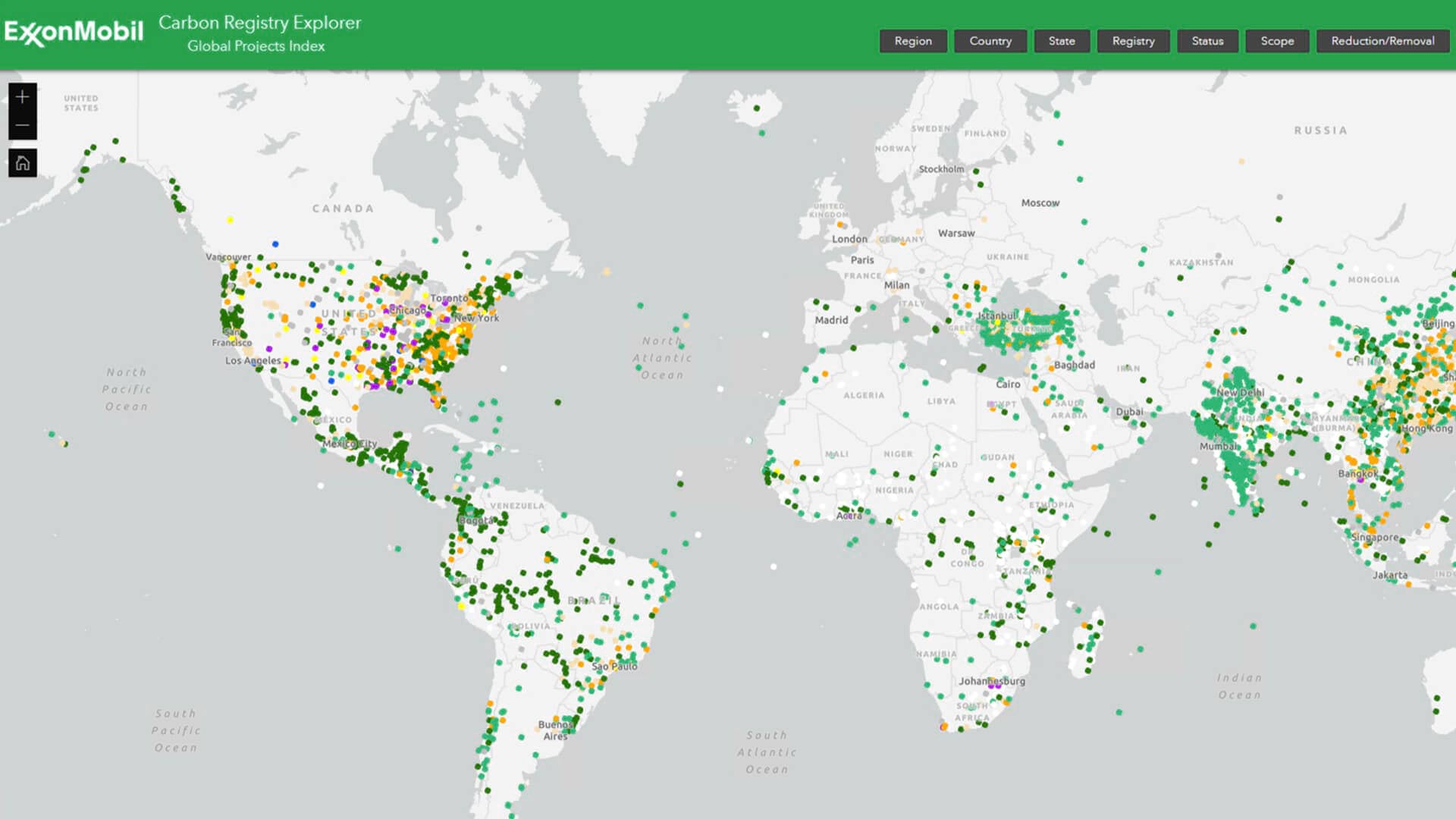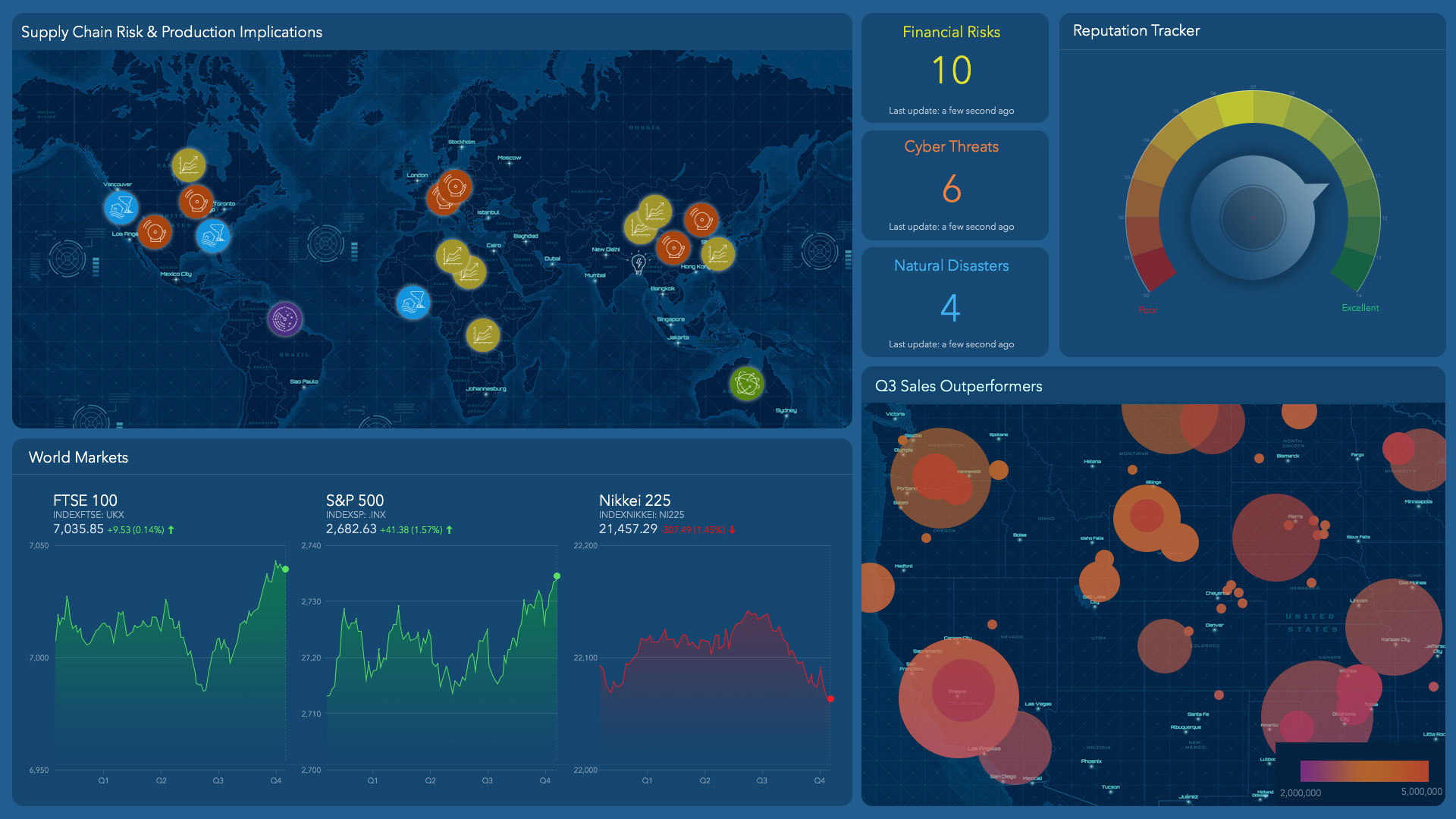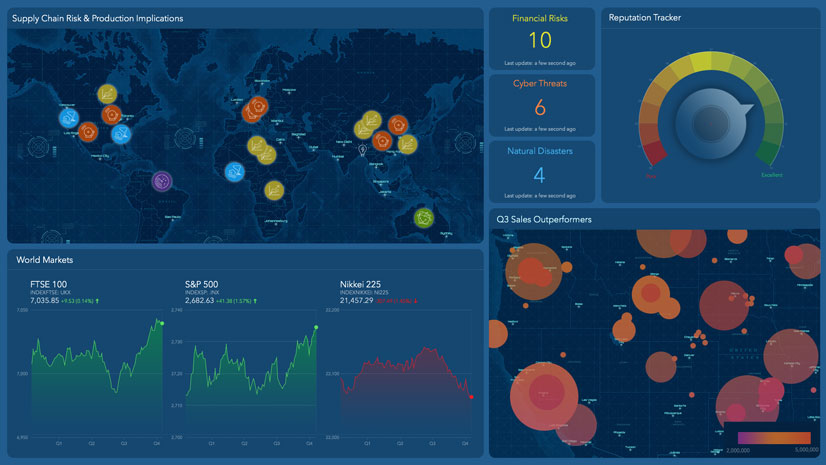Business leaders can’t capitalize on what they can’t see. For those operating in a data-saturated environment, gaining an unobstructed view of the entire organization is a major priority.
The operational basemap has emerged as one of the best ways to help decision-makers see business operations in their totality. Like a ship captain unrolling a map detailing every nuance of the voyage, business leaders can use a digital operational basemap to set strategy based on a comprehensive picture of assets, people, and processes.
Map layers—managed by geographic information system (GIS) technology—bring critical information to light. Using GIS, a business leader can view all the real estate a company owns; underutilized sites or resources that can be repurposed; factories with the greatest emissions reductions; or offices with the highest percentage of employees working remotely.
For ExxonMobil, one of the world’s largest publicly traded international energy companies, an operational basemap was key to unlocking real estate insights that contributed to the company’s bottom line. The results of this location awareness have provided better insights into how real estate contributes to building an advantaged portfolio. Real estate analysis that in some cases took 30 employees nearly eight months to perform is now completed in seconds. Joel Glaze, ExxonMobil’s global real estate optimization lead, explains how it works in this video excerpt.
An Operational Basemap Guides ExxonMobil’s Real Estate Strategy
ExxonMobil, and its affiliates own thousands of assets and land parcels around the world. ExxonMobil Environmental and Property Solutions Company (E&PS) helps oversees the life cycle of its global real estate holdings, from construction planning to operations to divestment.
While the company had data on all these assets, the information lived in different areas of the organization. To speed up strategic decisions, E&PS created an operational basemap of all of ExxonMobil’s landholdings, which can be updated in real time and shared across locations and time zones.
The Basemap as a Backbone of Smart Strategy
An operational basemap provides a competitive advantage to institutions large or small. A regional bank executive might use a digital basemap to visualize data about customers’ technology preferences before deploying digitally enhanced ATMs.
For a broadband provider that’s grown through acquisitions, a GIS-powered basemap can track coaxial and fiber networks and help salespeople advise prospective customers on service availability.
With the enterprise awareness supplied by an operational basemap, executives across a broad range of industries can plan with the big picture in mind—not just a piece of it.
For a deeper look at how ExxonMobil benefits from its operational basemap, view the full video of Joel Glaze’s presentation.
The Esri Brief
Trending insights from WhereNext and other leading publicationsTrending articles

December 5, 2024 |

July 25, 2023 |

November 25, 2024 |

February 25, 2025 |

April 1, 2025 |

November 12, 2018 |





